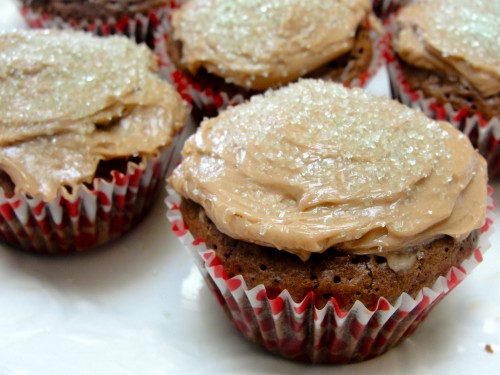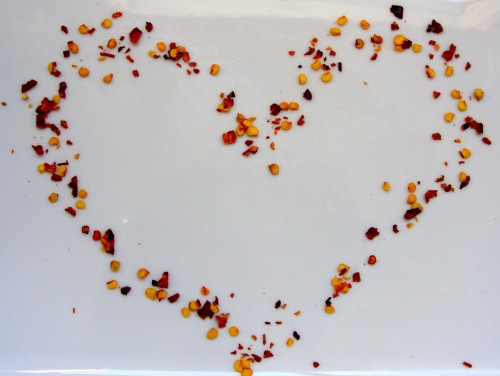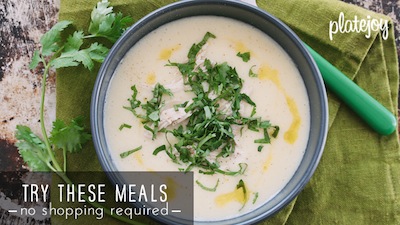
A few months ago one of my favorite fellow bloggers tapped me on the shoulder to join him for the “My 7 Links Project”–the purpose of which was to reflect on one’s own blog, to resurface posts that had been lost in the shuffle, and to build a web of community by asking other online writers to do the same.
Now in typical busy life fashion, many book deadlines, holiday egg nog, and the need for sleep kept getting in the way of this post. Weeks and weeks have gone by. And the words “write 7 links” constantly appeared on the to-do list, always getting knocked off the top by some urgent matter.
But since my new year’s mantra is “peace,” I’m not going to worry about the delay and instead, I’ll just figure that all that waiting was worth it. And that now is the perfect time to finally dig up those posts of blogging past.To reflect on how far we’ve come since Sodium Girl started in March of 2009. To thank the dear Oui, Chef for including me in this project. And to celebrate the wonderful online community by happily linking to other low-sodium bloggers and resources that will help you continue to broaden your low-sodium food and life.
So without further ado, let’s get our countdown on.
Link : My Most Beautiful Post
This is a picture of a pea shoot. Taken right in front of my kitchen wall. Around 7am. When the light was just right. With a point and shoot camera.
But the emerald sheen of the shot isn’t the only thing that is “beautiful” about this post (although this is truly one of my favorite pictures. Ever).
The twists and curls of this uncommon green make my heart skip a beat. And I think this post, all about the pea shoot and other newfangled veggies I found at the market, perfectly reflects on the pure beauty of good food. Whole food. Interesting looking food that–through it’s look, texture, and color–will brighten up your low-sodium dishes.
Want to get to know pea shoots better? Or where to get them and other equally neat ingredients?
If you live in the Bay, check out CUESA.org and BiRite Market to find out which ingredients are in season as well as recipes and cooking demonstrations to learn how to best use them.
For those not in California, use LocalHarvest.org to find farmer’s markets, farms, CSA’s, and other organizations that provide sustainable produce and proteins.
Link 2: My Most Popular Post
Analytics bore me.
But the rate at which people have dug up this old post excites me very much.
I receive more email requests for this recipe than any other, asking for that low-sodium chicken and potato salad in the picture.
It is an incredibly simple dish, using the natural flavors of the ingredients and natural saltiness found in the chicken to make the salad surprisingly scrumptious. With a sprinkle of chives, too.
And I think it is so popular with readers because it serves as a truly successful introduction to low-sodium cooking for those just starting the salt-free diet. It’s quick to make. It uses creative techniques. It is colorful. It has tons of unexpected tastes. And it is also a great recipe to share with salt-eating family and friends.
It defies everything you thought you knew about low-sodium food. And that’s what this blog is all about.
That’s what Christy at the Daily Dish is all about, too. And recently, she has been highlighting other amazing low-sodium bloggers (like Johanna at Low Sodium Blog) and websites (like Umit’s Eat Low Sodium) that do the leg work to discover the latest low-sodium tricks, recipes for shepherd’s pie, and links to salt-free products so you don’t have to.
While I like to consider myself a low-sodium expert (eight years and two failed kidneys will do that to a gal), I also know that I have a lot left to learn and explore, and that by literally linking to the whole community of low-sodium eaters out there, that you and I will continue to create exciting salt-free potato salads. And maybe even bacon. One day.
Link 3: My Most Controversial Post
I didn’t use profanity. And I definitely did not expose myself.
But I did claim, in this old post, that the sodium found in shrimp had increased from 144mg per 3 ounces to 480mg per 3 ounces. And that sure lit a fire for some readers who love the crustaceans.
Even though the discrepancy caused me some anxiety, this turned out to be one of my favorite blogging moments. First, because there was a direct conversation happening between me (blogger) and you (the readers). And together, we were going to get to the bottom of this whole shrimp ordeal.
But more impressively, it also proved to me that the answers are always out there. And that the Internet (thank you, Al Gore) is amazing.
Using my favorite resource for nutritional information, the USDA National Nutrient Database, I not only confirmed the new sodium numbers, but I also connected directly with a real, live person who could explain the increase–a result of proteins like shrimp, pork, chicken, and now clams being either enhanced or cleaned with salty brines before hitting the grocery stores.
Eating well and safely on a low-sodium diet requires keeping up-to-date and educated on the latest information. And sites like the one below and the Food Analyzer from DaVita offer a quick and trustworthy means of finding the information you need–whether you are searching for information on sodium, potassium, or the calories in those crispy, unsalted In N’ Out french fries. Which you shouldn’t be. You should just eat and enjoy them.
Link 4: My Most Helpful Post
This post is about soy sauce. Fish sauce. Teriyaki sauce. And all those Asian-inspired condiments and recipes you thought you may never eat again.
These are the kinds of low-sodium ingredients, recipes, and challenges that I love to take on and conquer. These are the things I like to remake with salt-free substitutes. And these are the men who showed me how.
First, Dick Logue of Low-Sodium Cooking and second, my low-sodium mentor and the pioneer of low-sodium, salt-free cooking, Donald Gazzinaga at MegaHeart.com.
Without their websites, cookbooks, and inspiration I not only would still be eating steamed vegetables every night for dinner. But I also would have never dared to explore the world of salt-free substitutes and low-sodium makeovers. And I would never have discovered things like salt-free soy sauce, teriyaki sauce, and many other condiments that we all love.
Link 5: Most Surprisingly Succesful Post
This simple dinner concoction of leftovers turned out to be one of my biggest blogging moments.
I entered it in one of the very first Food52.com cooking contests and low and behold, I actually earned an editors pick from Amanda Hesser and Merrill Stubbs. This little low-sodium dish won approval from salt-eaters. And that’s all I needed to know to start taking salt-free cooking (and this blog) seriously.
It’s when I realized that low-sodium food was not something you had to hide. But something you have to share. Because it is good. Real good. And others will enjoy it too.
Link 6: Most Neglected Post
Perhaps you’ve read this one before. Perhaps not. But here’s the gist of it: utter and complete baking butchery. Total failure. And the importance of getting back on your proverbial culinary bike and trying again.
Now, it’s not that this old post about my failed attempt at baking low-sodium, gluten-free cupcakes is neglected. But I want to make the point (with this link) that it is the kitchen and making food from scratch that is often neglected. Many times because people are afraid of failure. Like I experienced in the post above.
But for someone on a low-sodium diet, staying out of your kitchen is not an option. Neither is making mistakes. They will happen. And the most important part is not getting discouraged. And always having some sort of contingency plan (like chocolate bars, a rice cooker, leftovers) to keep you full in case of a cooking emergency.
Link 7: The Post that Makes me Most Proud
And this is how we get back to Oui, Chef and 14 other food and diet bloggers who lovingly created low-sodium dishes for you last February as part of my ad hoc Love Your Heart Recipe Rally.
From Pizza to Pork Tenderloin, these brave bloggers took a crash course on what it means to live and eat on a low-sodium diet. And while their recipes where all to die for, it was their thoughts on the experience that really stuck a chord.
So if you missed the Recipe Rally last year, check out how these cooks conquered the challenge of salt-free cooking. And get ready for an even bigger event (fingers crossed) this year!
Happy 2012, everyone!















I knew you’d get you this one day when you had time to catch your breath. Love the post, and want to wish you a very happy new year! Can’t wait to hear of plans for your 2012 Love Your Heart Rally. be good – S
Get ready. I’m drafting the email as we speak!
Thanks so much for the shout-out, Jess! And thanks also for this great post, which highlights not only your beautiful takes on salt-free eating, but just how fun (and creative!) it can be. Long live the low-so community! Woot!
I enjoy what you guys tend to be up too.
Such clever work and exposure! Keep up the wonderful works guys I’ve included you guys to blogroll.
Your style is so unique in comparison to other
people I’ve read stuff from. Many thanks for posting when you have the opportunity, Guess I will just book mark this blog.